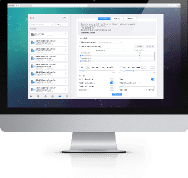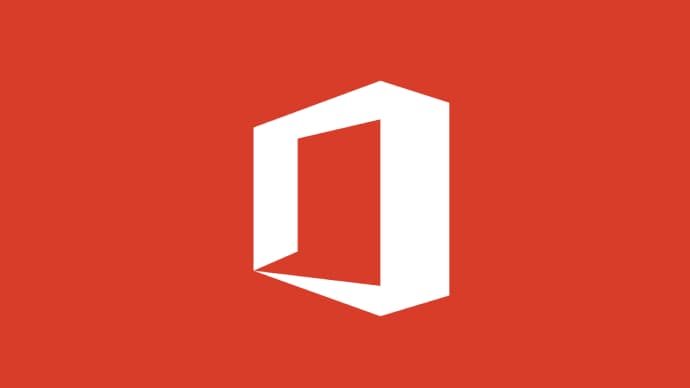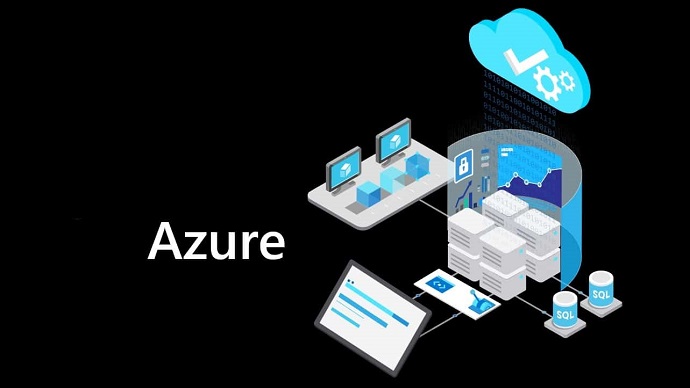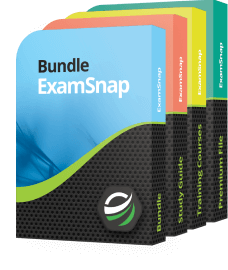Use VCE Exam Simulator to open VCE files

Professional Cloud DevOps Engineer Google Practice Test Questions and Exam Dumps
You are responsible for supporting a Node.js application running on Google Kubernetes Engine (GKE) in a production environment. The application frequently makes HTTP requests to several dependent applications, and you want to ensure that you can anticipate which of these dependent applications might potentially cause performance bottlenecks. Which approach should you take to proactively identify performance issues related to the dependent services?
A. Instrument all applications with Stackdriver Profiler.
B. Instrument all applications with Stackdriver Trace and review inter-service HTTP requests.
C. Use Stackdriver Debugger to review the execution of logic within each application to instrument all applications.
D. Modify the Node.js application to log HTTP request and response times to dependent applications. Use Stackdriver Logging to find dependent applications that are performing poorly.
In a microservices architecture, particularly when running on Kubernetes, it is crucial to monitor and diagnose the performance of both the main application and its dependent services. These dependent services could cause performance issues such as high latency or timeouts if they are underperforming. To address this, it’s essential to have the right tools in place to identify which services might be creating these bottlenecks. Let’s explore each option:
A. Instrument all applications with Stackdriver Profiler:
Stackdriver Profiler helps you identify the performance bottlenecks by profiling CPU and memory usage in your applications. However, it is not specifically designed for monitoring inter-service communication, like HTTP requests between services. While useful for understanding resource utilization within individual services, it does not provide a clear view of the performance of dependent applications via HTTP requests. Therefore, this option does not fully address the problem.
B. Instrument all applications with Stackdriver Trace and review inter-service HTTP requests:
Stackdriver Trace (now part of Google Cloud's "Cloud Trace") is an ideal tool for distributed tracing, especially for identifying performance issues in a microservices architecture. By instrumenting all applications with Stackdriver Trace, you can track and visualize HTTP requests between services. This allows you to observe the latency and performance of each request as it traverses through the system. It also provides insight into which dependent applications might be causing delays, making it the most effective solution to proactively identify performance bottlenecks.
C. Use Stackdriver Debugger to review the execution of logic within each application:
Stackdriver Debugger allows you to inspect the application’s state in real-time, providing deep insight into variables and program execution. While this is useful for debugging code-level issues, it is not intended for monitoring performance across inter-service HTTP requests. Using Stackdriver Debugger for performance monitoring across distributed systems is not efficient, as it doesn’t provide an overview of the overall service performance or latency.
D. Modify the Node.js application to log HTTP request and response times to dependent applications. Use Stackdriver Logging to find dependent applications that are performing poorly:
While logging HTTP request and response times in the Node.js application can provide useful data, manually instrumenting logging is a more rudimentary approach. It can become challenging to correlate logs across services and scale this solution as the system grows. Additionally, without dedicated tracing capabilities, the logs might not offer a comprehensive view of the system’s performance. Stackdriver Logging also lacks native support for distributed tracing, which is important for diagnosing performance issues related to inter-service communication.
By instrumenting all applications with Stackdriver Trace, you gain a holistic view of your distributed system’s performance. You can trace HTTP requests between services, measure latency, and identify which dependent services might be slowing down the overall system. This allows for proactive detection and resolution of performance issues before they affect the production environment.
You have created a Stackdriver chart to monitor CPU utilization and added it to a dashboard within your Google Cloud project’s workspace. You want to share this chart with your Site Reliability Engineering (SRE) team, but you also want to ensure that you follow the principle of least privilege—meaning you only grant them the necessary permissions to view the chart and not perform any other actions in the project. What should you do to share the chart with the SRE team while adhering to this principle?
A. Share the workspace Project ID with the SRE team. Assign the SRE team the Monitoring Viewer IAM role in the workspace project.
B. Share the workspace Project ID with the SRE team. Assign the SRE team the Dashboard Viewer IAM role in the workspace project.
C. Click “Share chart by URL” and provide the URL to the SRE team. Assign the SRE team the Monitoring Viewer IAM role in the workspace project.
D. Click “Share chart by URL” and provide the URL to the SRE team. Assign the SRE team the Dashboard Viewer IAM role in the workspace project.
In Google Cloud, the principle of least privilege involves granting users only the necessary permissions to perform their job functions. When sharing a chart from Stackdriver (now part of Google Cloud Operations Suite) with the SRE team, you want to make sure they can view the chart but not modify it or access other sensitive resources in the project. Let’s break down the options:
A. Share the workspace Project ID with the SRE team. Assign the SRE team the Monitoring Viewer IAM role in the workspace project:
The "Monitoring Viewer" IAM role allows the SRE team to view monitoring data, including metrics and charts, but it provides broad access to all monitoring resources in the project. This may grant more access than necessary, violating the principle of least privilege. Therefore, this option is not ideal because it gives more permissions than what is required to view just the chart.
B. Share the workspace Project ID with the SRE team. Assign the SRE team the Dashboard Viewer IAM role in the workspace project:
The "Dashboard Viewer" IAM role is more restrictive than "Monitoring Viewer" and is specifically designed for granting access to view dashboards. However, this role still requires sharing the project ID, which may expose unnecessary access to other resources in the project. While it minimizes the permissions compared to "Monitoring Viewer," it still grants access to all dashboards in the workspace, which might not be the most secure option in certain cases.
C. Click “Share chart by URL” and provide the URL to the SRE team. Assign the SRE team the Monitoring Viewer IAM role in the workspace project:
This option allows the SRE team to view the chart via a URL, which is a secure and targeted way of sharing only that specific chart. However, by assigning the "Monitoring Viewer" IAM role to the team, you're still granting broader permissions than necessary. This would give them access to all monitoring data, not just the specific chart, which is more than is required for their purpose.
D. Click “Share chart by URL” and provide the URL to the SRE team. Assign the SRE team the Dashboard Viewer IAM role in the workspace project:
This is the most appropriate option. Sharing the chart via URL provides a secure way of sharing the chart without exposing access to other resources in the project. The "Dashboard Viewer" IAM role grants the least privilege by allowing the SRE team to view the specific dashboard without providing unnecessary permissions to other parts of the project. It focuses the permissions strictly on viewing dashboards, which aligns with the principle of least privilege.
By sharing the chart via URL and assigning the SRE team the "Dashboard Viewer" IAM role, you ensure they have the minimum necessary permissions to view the chart without granting broader access to the project or other monitoring resources. This method adheres to the principle of least privilege, offering a secure and focused solution.
Your organization is working to implement Site Reliability Engineering (SRE) practices, and as part of this initiative, you are expected to foster a culture of transparency and continuous improvement. Recently, a service that you support experienced a limited outage, and a manager from another team has requested a formal explanation of what happened so they can take action on any necessary remediations. What is the best approach for creating and sharing the postmortem to ensure it aligns with SRE principles and promotes learning and improvement?
A. Develop a postmortem that includes the root causes, resolution, lessons learned, and a prioritized list of action items. Share it with the manager only.
B. Develop a postmortem that includes the root causes, resolution, lessons learned, and a prioritized list of action items. Share it on the engineering organization's document portal.
C. Develop a postmortem that includes the root causes, resolution, lessons learned, the list of people responsible, and a list of action items for each person. Share it with the manager only.
D. Develop a postmortem that includes the root causes, resolution, lessons learned, the list of people responsible, and a list of action items for each person. Share it on the engineering organization's document portal.
In Site Reliability Engineering (SRE), postmortems are a crucial part of fostering a learning culture and ensuring continuous improvement. A well-written postmortem helps the organization understand what went wrong, how it was resolved, and what actions can be taken to prevent similar issues in the future. The way a postmortem is shared and who it is shared with can greatly impact the outcome of the remediation and learning process.
Let’s analyze each option:
A. Develop a postmortem that includes the root causes, resolution, lessons learned, and a prioritized list of action items. Share it with the manager only:
While this option provides a well-structured postmortem, it limits the transparency and learning opportunities. Sharing it with only the manager restricts the knowledge to one person or team, which doesn't align with SRE's culture of open communication and shared learning. SRE emphasizes creating a culture where everyone can learn from incidents, so restricting access to the postmortem goes against these principles.
B. Develop a postmortem that includes the root causes, resolution, lessons learned, and a prioritized list of action items. Share it on the engineering organization's document portal:
This is a better option than sharing the postmortem with just one manager, as it promotes transparency and ensures that the entire engineering organization can access and learn from the incident. By sharing it on a public document portal, the postmortem can be reviewed by anyone in the engineering team, fostering learning and collaboration. However, this option does not include action items assigned to specific individuals, which may reduce accountability.
C. Develop a postmortem that includes the root causes, resolution, lessons learned, the list of people responsible, and a list of action items for each person. Share it with the manager only:
This option is quite detailed but again suffers from the same limitation as option A—restricting the postmortem to a single manager. While providing individual responsibility and action items is a good practice for accountability, limiting access to just one person or team reduces the opportunity for others to learn from the incident and improve.
D. Develop a postmortem that includes the root causes, resolution, lessons learned, the list of people responsible, and a list of action items for each person. Share it on the engineering organization's document portal:
This is the most comprehensive and aligned with SRE best practices. It includes all the necessary components of a good postmortem: root causes, resolution, lessons learned, accountability (with assigned action items), and it ensures that the postmortem is accessible to the entire engineering organization via the document portal. Sharing it broadly encourages transparency, accountability, and continuous improvement, all of which are core tenets of SRE.
This option promotes transparency, accountability, and learning within the organization. It also aligns with the SRE principle of blameless postmortems, where the focus is on understanding the root causes and improving systems, not assigning blame. Sharing the postmortem widely encourages a culture of openness and continuous improvement.
You have a set of applications running on a Google Kubernetes Engine (GKE) cluster, and you are utilizing Stackdriver Kubernetes Engine Monitoring to manage monitoring and logging. You are now bringing a new containerized application into production, which is developed by a third party. This new application cannot be modified or reconfigured, and it writes its log information to the file /var/log/app_messages.log. You want to send these log entries to Stackdriver Logging for better observability and troubleshooting. What is the best approach to achieve this?
A. Use the default Stackdriver Kubernetes Engine Monitoring agent configuration.
B. Deploy a Fluentd daemonset to GKE. Then create a customized input and output configuration to tail the log file in the application's pods and write to Stackdriver Logging.
C. Install Kubernetes on Google Compute Engine (GCE) and redeploy your applications. Then customize the built-in Stackdriver Logging configuration to tail the log file in the application's pods and write to Stackdriver Logging.
D. Write a script to tail the log file within the pod and write entries to standard output. Run the script as a sidecar container with the application's pod. Configure a shared volume between the containers to allow the script to have read access to /var/log in the application container.
When integrating logs from a containerized application running on Google Kubernetes Engine (GKE) into Stackdriver Logging (now part of Google Cloud Operations), the challenge is to collect and forward logs from locations that are not automatically captured by default logging agents. Given that the new application writes logs to a custom file location (/var/log/app_messages.log), there are several ways to configure log forwarding. Let’s review each option:
A. Use the default Stackdriver Kubernetes Engine Monitoring agent configuration:
The default Stackdriver Kubernetes Engine Monitoring agent configuration is primarily set up to capture logs from the default paths used by Kubernetes and container runtimes (like /var/log/pods). It does not automatically capture logs from custom file locations like /var/log/app_messages.log. Therefore, using the default configuration will not capture the logs from your third-party application, making this option unsuitable for your use case.
B. Deploy a Fluentd daemonset to GKE. Then create a customized input and output configuration to tail the log file in the application's pods and write to Stackdriver Logging:
Fluentd is a highly flexible log-forwarding tool commonly used in GKE environments for custom log collection. By deploying Fluentd as a daemonset in GKE, you can configure it to tail custom log files (such as /var/log/app_messages.log) inside the application's pods and send the logs to Stackdriver Logging. This is an ideal solution because Fluentd allows for easy customization and handles log aggregation and forwarding across a Kubernetes cluster.
This approach is effective for collecting logs from non-standard locations in the pods and sending them to Stackdriver Logging. It adheres to the Kubernetes-native architecture and provides full control over the log processing pipeline.
C. Install Kubernetes on Google Compute Engine (GCE) and redeploy your applications. Then customize the built-in Stackdriver Logging configuration to tail the log file in the application's pods and write to Stackdriver Logging:
Installing Kubernetes on Google Compute Engine (GCE) and redeploying applications introduces unnecessary complexity. GKE is a managed Kubernetes service that abstracts away infrastructure management tasks, and there is no need to switch to a self-managed GCE setup. Additionally, the built-in Stackdriver Logging configuration is not as flexible for custom log locations, so this option is inefficient and not aligned with best practices for GKE-based logging.
D. Write a script to tail the log file within the pod and write entries to standard output. Run the script as a sidecar container with the application's pod. Configure a shared volume between the containers to allow the script to have read access to /var/log in the application container:
This approach is valid because Kubernetes allows for sidecar containers that run alongside the main application container in the same pod. The sidecar container can tail the log file and forward the logs to stdout, which Kubernetes and Stackdriver Logging automatically capture. Using a shared volume allows the sidecar container to access the log file, and writing logs to stdout ensures they are captured by Kubernetes' default logging mechanisms.
While this is a functional solution, it requires managing additional containers and volumes, which may add some complexity. It is still a viable option but is slightly more cumbersome compared to Fluentd, especially if the logging configuration needs to be highly customizable.
This option provides the most scalable and flexible solution for forwarding logs from a custom location to Stackdriver Logging. Fluentd is widely used for log aggregation in Kubernetes and integrates well with GKE. By using Fluentd, you can easily handle custom log locations and ensure that all logs are captured and forwarded to Stackdriver for centralized logging and analysis.
You are running an application on a Google Cloud Virtual Machine (VM) using a custom Debian image. The VM has the Stackdriver Logging agent installed, and the VM has the cloud-platform scope assigned. The application writes logs via syslog. However, when you try to view the logs in Stackdriver Logging through the Google Cloud Console, you notice that the syslog entries are not appearing in the "All logs" dropdown list in the Logs Viewer. What is the first step you should take to troubleshoot this issue?
A. Look for the agent’s test log entry in the Logs Viewer.
B. Install the most recent version of the Stackdriver agent.
C. Verify the VM service account access scope includes the monitoring.write scope.
D. SSH to the VM and execute the following command: ps ax | grep fluentd.
In this scenario, your application logs are not appearing in Stackdriver Logging even though the Stackdriver agent is installed and the VM has the necessary cloud platform scope. There are several steps you can take to troubleshoot the issue. Let’s analyze each option:
A. Look for the agent’s test log entry in the Logs Viewer:
When the Stackdriver Logging agent is installed, it generates a test log entry to verify that it is functioning correctly. Looking for this test entry is a good first step, as it will tell you whether the agent is actively sending logs to Stackdriver Logging. If you see the test entry, but not the application logs, the issue may lie with the log forwarding configuration. If you don’t see the test entry either, it indicates that the agent might not be running properly. This is a useful diagnostic step.
B. Install the most recent version of the Stackdriver agent:
While updating the Stackdriver Logging agent to the latest version can resolve compatibility issues, this is not the first thing you should do in this case. Before updating, you should first verify whether the agent is running correctly. Updating the agent might solve the problem if the current version is outdated, but it is not necessarily the root cause of the issue. Therefore, this step should come after verifying the agent’s status.
C. Verify the VM service account access scope includes the monitoring.write scope:
The cloud-platform scope includes broader permissions, including the monitoring.write scope, so this option is unlikely to be the root cause. The issue here seems to be related to how the agent is running and how logs are being forwarded, not the scope of the service account. Therefore, checking the access scope is not the most immediate step to take in troubleshooting this issue.
D. SSH to the VM and execute the following command: ps ax | grep fluentd:
Fluentd is the log-forwarding agent used by Stackdriver Logging, and checking whether it’s running correctly can help identify any issues. If Fluentd is not running, or if it’s not correctly forwarding logs to Stackdriver, this could explain why the syslog entries are missing in the Logs Viewer. Running this command checks if the Fluentd process is active on the VM. If Fluentd is not running, it may need to be restarted or reconfigured.
This is the most direct way to determine if the Fluentd process is running correctly on the VM. If the agent is not running or has failed, it will not be able to forward syslog entries to Stackdriver Logging. After confirming that the agent is running, you can move on to additional troubleshooting steps, such as checking configuration files or looking for specific error logs.
Related Exams

Top Training Courses











SPECIAL OFFER: GET 10% OFF
This is ONE TIME OFFER

A confirmation link will be sent to this email address to verify your login. *We value your privacy. We will not rent or sell your email address.
Download Free Demo of VCE Exam Simulator
Experience Avanset VCE Exam Simulator for yourself.
Simply submit your e-mail address below to get started with our interactive software demo of your free trial.